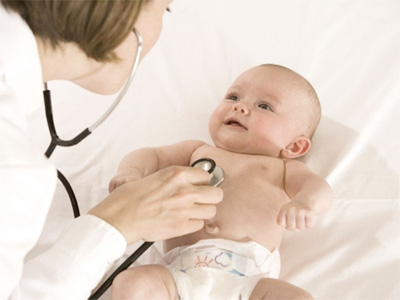Osteopathy is a field of medicine based on a holistic concept aimed at the diagnosis and treatment of dysfunctions of macro- and micromotion of body tissues.
As part of traditional medicine, it takes into account the pathogenetic mechanisms of disease development and considers the human body outside the nosological approach, restoring the ability to self-regulation and adaptation.
For diagnostic and therapeutic manipulations in osteopathy, examination, functional tests, palpation and exposure to the doctor’s hands on the anatomical structures of the skull, sacrum, joints, muscular-fascial structures, internal organs of the patient’s body are used, taking into account the necessary studies offered by modern medicine.
Osteopathy is based on fundamental knowledge of anatomy and physiology, and the highest sensitivity of the hands of an osteopath doctor, achieved through years of special training. Mastering the specialty of an osteopath requires an additional fundamental four-year training.
Osteopathy effectively treats diseases

Musculoskeletal system
- Postural Disorders (Postural Disorders During Pregnancy)
- Partial or complete loss of mobility due to trauma (adhesions, bruises, dislocations, fractures, breaks, tears, sprains)
- Soft tissue injuries
- The consequences of surgery
- Perinatal injuries of the newborn
- Partial or complete loss of joint mobility; partial blockage of one or more joints
- Arthrosis and Non-Infectious Arthritis
- Dysfunction of the temporomandibular joint calcaneal spur syndrome Pain in areas (cervicalgia, cervicobrachialgia, coccyalgia, coxalgia, cruralgia, dorsalgia, sciatica, lumbalgia, pain in the occipital part, subalgia, pubalgia, sacralgia, scapular pain and others)
Digestive system
- irritable bowel syndrome
- transit disorders (constipation and diarrhea)
Endocrine system
- locomotor and vascular disorders in diabetes
- locomotor disorders in menopause
- essential hypertension
- essential hyperthyroidism, hypothyroidism
- эссенциальный гиперпролактинемический синдром
Reproductive and genitourinary systems
- adhesions after adnexitis and childbirth
- testicular pain
- violation of the position and mobility of the uterus
- menstrual irregularities
- preparation for childbirth
- prostatitis
- premenstrual syndrome
Disorders of the central nervous system
- essential headache
- consequences of cranial injury
- defeat of FMN
- perinatal cerebral injury syndrome
- spasticity
- dizziness
Disorders of the peripheral nervous system. 1. Violations of sensitivity (anesthesia, dysesthesia, paresthesia)
- Guyon Channel Syndrome
- tarsal canal syndrome (posterior tibial nerve)
- carpal tunnel syndrome (median nerve)
- scalene syndrome (brachial plexus)
Disorders of the peripheral nervous system. 2. Motor disturbances
- sympathicotonia
- Raynaud’s syndrome
- Hernia and protrusion of the disc, sciatica, radiculopathy, dorsopathy
Disorders of the peripheral nervous system. 3. Psychosomatic Disorders
- asthenia
- essential headache
- enurez
- functional pain
- essential dizziness syndrome
Respiratory system
- bronchial asthma
- Chronical bronchitis
- consequences of pleurisy
- consequences of pneumothorax
- rhinitis
Excretory system
- chronic cystitis
- urinary incontinence, enuresis
- primary renal failure
- renal lithiasis
- irritable bladder syndrome: nephroptosis, prolapse of the bladder
Maxillofacial system
- disorders of the temporomandibular joint
- occlusion disorders associated with impaired posture and gait
- Bruxism
Mastering the techniques of palpation, the doctor must learn a huge number of techniques for manual diagnosis and treatment, turning them into the art of therapeutic touch.
All manipulations are painless: during the session, the patient feels only pleasant relaxation throughout the body. The session lasts from 30 minutes to 2 hours.
An osteopathic doctor, examining the body with his hands, feels deviations from the norm: muscle and ligament tension, an increase in the size and density of the organ, displacement of bones, tension of tendons and fascial membranes, violation of the rhythms of movement of the organ. The fingers of an osteopath record the slightest changes, even those that have not yet hurt.
The doctor’s task is to find and eliminate the cause of the disease, and not its consequence, that is, to return to the correct position the displaced organ, due to which the back hurts, or to relieve muscle tension that causes pain. Moreover, all effects are performed only within the physiological capabilities of the body and do not exceed the pain threshold.
Osteopathy as a treatment method has the following advantages:
- Diagnostic accuracy. An osteopath is able to detect functional abnormalities that are not detected even by diagnostic devices, and identify the true cause of the disease, even if it is not in the place where it hurts.
- Safe treatment without pain. Osteopathy uses soft, absolutely safe and painless techniques.
- Elimination of the cause. An osteopath identifies the root causes of the development of the disease, which are often hidden behind neurological symptoms and giving pain. This allows for effective treatment, and not just to make you feel better.
- Scientific base. Osteopathy is based on accurate knowledge of anatomy, physiology, biochemistry and histology.
- Reduced medication. The successful use of osteopathy can reduce the frequency and quantity of medications taken or completely abandon medication.




Hello Guys, Glad to Join! :)Dysfunction of the temporomandibular joint calcaneal spur syndrome Pain in areas (cervicalgia, cervicobrachialgia, coccyalgia, coxalgia, cruralgia, dorsalgia, sciatica, lumbalgia, pain in the occipital part, subalgia, pubalgia, sacralgia, scapular pain and others)